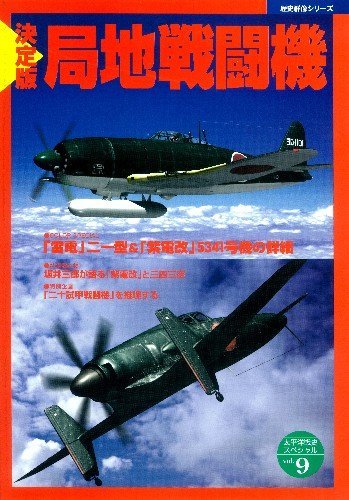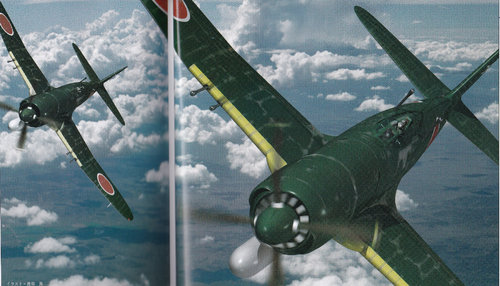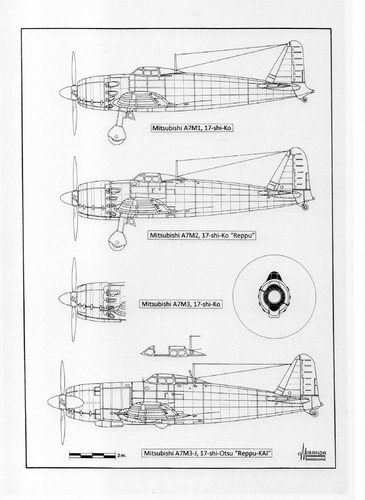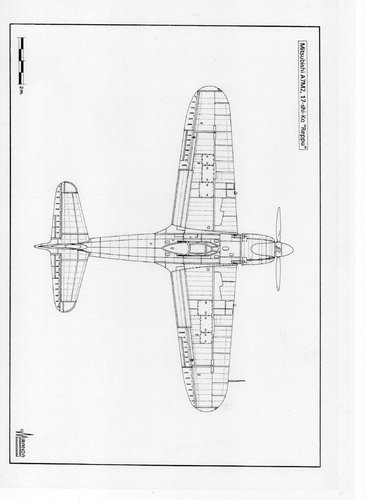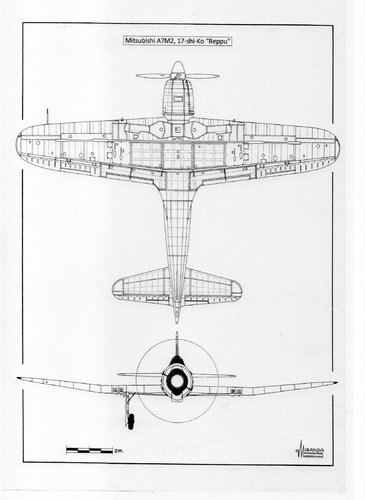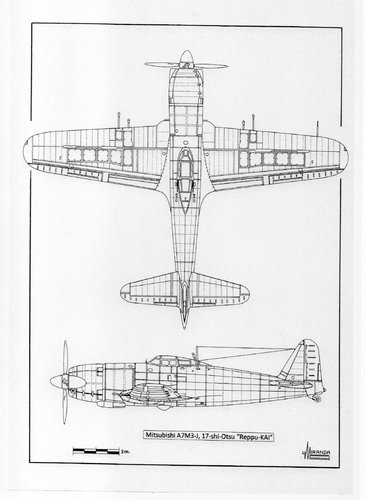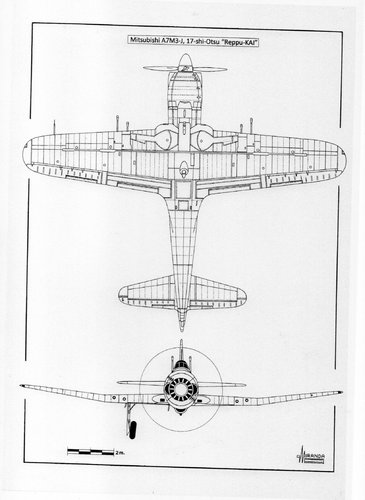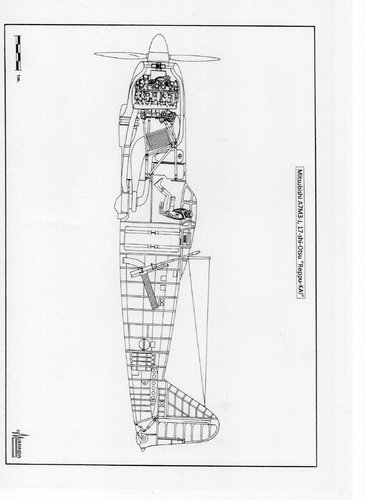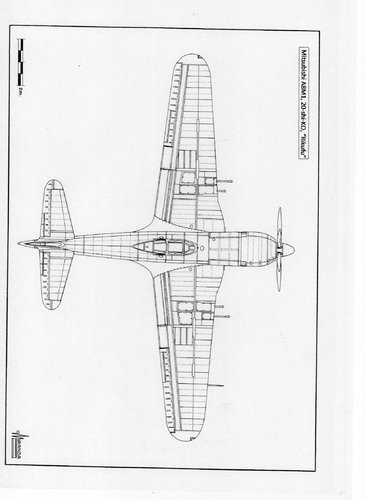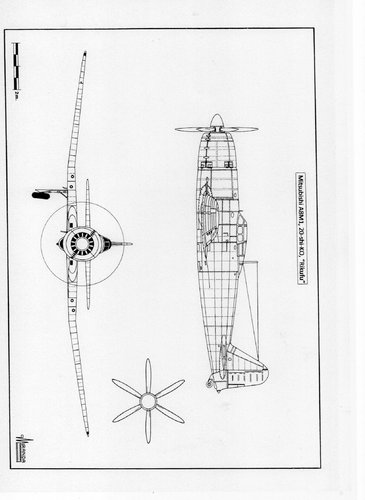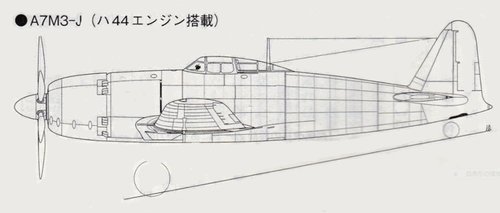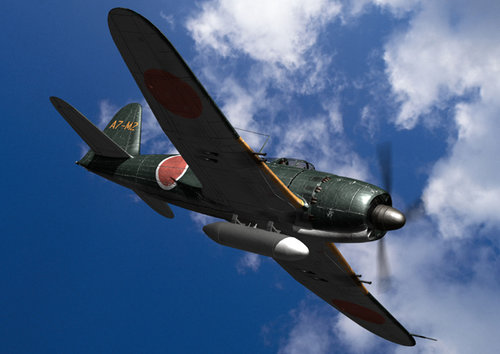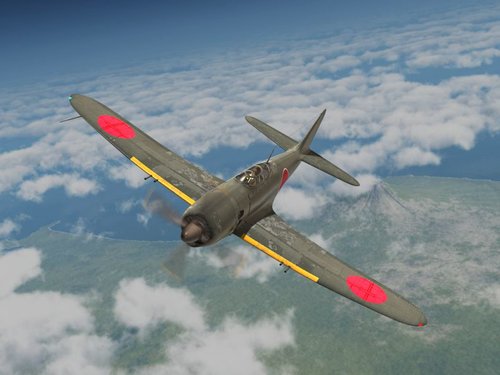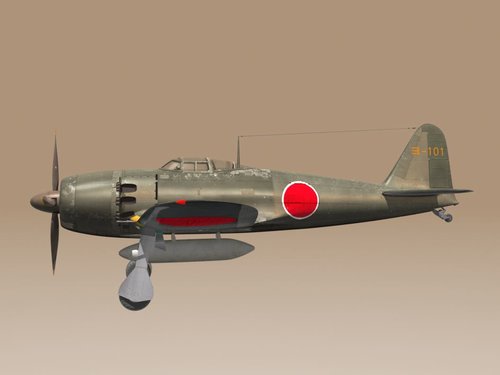You are using an out of date browser. It may not display this or other websites correctly.
You should upgrade or use an alternative browser.
You should upgrade or use an alternative browser.
Mitsubishi A7M Reppu ("Sam")
- Thread starter lastdingo
- Start date
blackkite
Don't laugh, don't cry, don't even curse, but.....
- Joined
- 31 May 2007
- Messages
- 8,783
- Reaction score
- 7,565
Hi! Another site for A7M3. Enjoy.
http://uenoshing.hatenablog.com/
http://uenoshing.hatenablog.com/
Attachments
CherryBlossom
English Literature with Film Studies student
- Joined
- 17 April 2014
- Messages
- 78
- Reaction score
- 4
Hello black,
Unfortunately when i ever i go on that website, it comes out like this: http://i.imgur.com/ej5RTJB.png
Unfortunately when i ever i go on that website, it comes out like this: http://i.imgur.com/ej5RTJB.png
lastdingo
Blogger http://defense-and-freedom.blogspot.de/
The A7M1 will soon be in the "War Thunder" game, so expect the internet to be polluted with ingame (CGI) images of the Reppu soon. 
CherryBlossom
English Literature with Film Studies student
- Joined
- 17 April 2014
- Messages
- 78
- Reaction score
- 4
lastdingo said:The A7M1 will soon be in the "War Thunder" game, so expect the internet to be polluted with ingame (CGI) images of the Reppu soon.
Oh yes. It will be the highest resolution model available on the internet. The cockpit is simply amazing, showing such careful detail.
blackkite
Don't laugh, don't cry, don't even curse, but.....
- Joined
- 31 May 2007
- Messages
- 8,783
- Reaction score
- 7,565
Mitsubishi high altitude ko fighter, temporary name : three speed Reppu/experimental high performance Reppu(A7M3).
A7M3 fighter development began in March 1945 as temporary name three speed Reppu(A7M3).
A7M3 fighter was selected one of the candidate for next Ko fighter in parallel with Reppu with Ha-44 engine by the unified research workshop between military members and civil company members. These Reppu were the last Reppu.
The fuselage of A7M3 fighter was almost same as A7M2 fighter, also the wing without wing tip folding mechanism was almost same as A7M2 except additional reinforcement due to more heavy armaments requirement. Other equipment were also same as A7M2 fighter.
A7M3 fighter had a Ha-43 type 51 engine(MK9C).
MK9C engine first stage three speed supercharger impeller diameter was enlarged to 335mm.
Power were as follows.
First speed full throttle : 2,000hp/1,800m/2,800rpm, Second speed full throttle : 1,800hp/5,600m/2,800rpm, Third speed full throttle : 1,660hp/8,700m/2,800rpm
A7M3 increased high altitude performance and propeller diameter was 0.1m larger than A7M2 propeller.
A7M3 armaments were newly designed six 99-shiki 2-go type 5 fixed 20mm cannon installed at the wing instead of A7M2’s four 99-shiki 2-go type 4 fixed 20mm cannon.
99-shiki 2-go type 5 fixed 20mm cannon retreat part was 1kg lighter than type 99-shiki 2-go type 4, and had a more strong accelerated spring, keeping initial velocity as 750m/s, launch speed increased from 620 bullets per minutes(type 4) to 720 bullets per minutes.
But reaction force became from 1.5ton(type 4) to 2.5ton, type 5 required structural reinforcement for the aircraft.
Bullet proof equipment of A7M3 fighter adopted the exterior system bullet proof tank (Was rubber thickness 22 mm?) about a body fuel tank. It wasn't adopted because the bag system bullet proof tank wasn't developed at all because of a problem of the material of the oil-proof synthetic fiber while equipment was scheduled by A7M2 fighter and A7M3-J fighter. Tanks in the wing was equipped with only automatic extinguish device.
It was expected to be equipped with 55 mm of bulletproof glass for pilot head protection to the column which protects a pilot at the time of the airplane overturn established behind the cockpit in A7M3 fighter.
It's believed that these bullet proof equipment is proportionate to Yokosuka flying corps following request to the next fighter "fuselage tank: rubber cover", "tank in the wing: Perfect automatic fire extinguishing", "pilot: Rear defense".
The concrete numerical value of onboard fuel capacity of A7M3 fighter is unclear.
But when the capacity of each fuel tank is as follows from the plan value of the cruising range, it's almost logical.
* The capacity of the body front tank of A7M3 fighter is identical with A7M2 fighter.
* The tank in the wing of A7M3 fighter is same as A7M1 early stage experimental production type mostly. There is 350L for the capacity of the tank. A tank isn't put by a bullet proof measure into effect.
* Body rear fixed additional tank of A7M3 fighter is changed to a tank with the about two times of capacity of A7M2 fighter.
The nominal gross weight of A7M3 fighter is said to be "5042 kilogram", but this numerical value is the numerical value which has just added the equipped amount in the fuselage of "machine gun and ammunition" "fuel" "aqueous methanol" to prudence, and when being regularly fully equipped, the weight of the ammunition fuel which isn't loaded includes.
On the other hand, It seems that the weight of the crew, the parachute, the bulletproof glass, the oxygen inhalation equipment and all kinds' radio equipment not to include.
When zero, Raiden, the numerical value of 11 type Reppu, A7M3 accessories and the fuel capacity above-mentioned are consulted, the nominal gross weight of A7M3 is estimated by a little more than 5000 kilogram and the over load weight at a little less than 5800 kilogram.
Development of A7M3 fighter was developed smoothly relatively, and completion of experimental production number 1 was scheduled for December, 1945, 9 months later from development starting.
A wooden mockup examination of A7M3 fighter was scheduled for August 16, 1945.
HA43 type51 engine while it was a durable test using the experimental production engine which has been just completed in July, 1945.
99-shiki 2-go type 5 20mm fixed cannon was in the situation that increased experimental production 60 cannons were completed by July, 1945, and was putting a shooting basic experiment by Reppu fighter.
It's said that A7M3 fighter which can be called the normal evolution type of A7M2 fighter had big expectations from each district. But the most part of design data of A7M3 fighter is undiscovered. Details of a shape change in a nose of a plane and a main wing of A7M3 fighter by engine replacement and reinforced armament are obscurity up to now.
The specification (the planned value)
The span
14.000m
The full length
Unclear
The total height
4.230m
The wing area
30.86m2
The empty weight
3392 kilogram
The gross weight (regular)
5042 kilogram
Over load
Unclear
Fuel
915 kilogram of onboard
Aqueous methanol
200L
Lubricating oil
Unclear
The max speed (at the time of regular full equipment)
643 km /h/8,700m
Climbing time (at the time of regular full equipment)
13 minute 64 second /10,000m
The rise limit
11,300m
The cruising range
Maximum speed for 0.5 h+ 417 km /h/4,000m cruise for 2.7 h
Armament
20 mm machine gun in the wing x 6 (number of biggest bullets 200 shots for each)
The engine
The Mitsubishi "HA 43 type51 (MK9C) Air-cooled radial 18 cylinder Takeoff power 2,130hp/2,900rpm x 1
Propeller
Sumitomo V.D.M. constant speed 4 blades (diameter 3.700m)
Source : http://www.warbirds.jp/data/jp/htm/a7m3.htm
A7M3 fighter development began in March 1945 as temporary name three speed Reppu(A7M3).
A7M3 fighter was selected one of the candidate for next Ko fighter in parallel with Reppu with Ha-44 engine by the unified research workshop between military members and civil company members. These Reppu were the last Reppu.
The fuselage of A7M3 fighter was almost same as A7M2 fighter, also the wing without wing tip folding mechanism was almost same as A7M2 except additional reinforcement due to more heavy armaments requirement. Other equipment were also same as A7M2 fighter.
A7M3 fighter had a Ha-43 type 51 engine(MK9C).
MK9C engine first stage three speed supercharger impeller diameter was enlarged to 335mm.
Power were as follows.
First speed full throttle : 2,000hp/1,800m/2,800rpm, Second speed full throttle : 1,800hp/5,600m/2,800rpm, Third speed full throttle : 1,660hp/8,700m/2,800rpm
A7M3 increased high altitude performance and propeller diameter was 0.1m larger than A7M2 propeller.
A7M3 armaments were newly designed six 99-shiki 2-go type 5 fixed 20mm cannon installed at the wing instead of A7M2’s four 99-shiki 2-go type 4 fixed 20mm cannon.
99-shiki 2-go type 5 fixed 20mm cannon retreat part was 1kg lighter than type 99-shiki 2-go type 4, and had a more strong accelerated spring, keeping initial velocity as 750m/s, launch speed increased from 620 bullets per minutes(type 4) to 720 bullets per minutes.
But reaction force became from 1.5ton(type 4) to 2.5ton, type 5 required structural reinforcement for the aircraft.
Bullet proof equipment of A7M3 fighter adopted the exterior system bullet proof tank (Was rubber thickness 22 mm?) about a body fuel tank. It wasn't adopted because the bag system bullet proof tank wasn't developed at all because of a problem of the material of the oil-proof synthetic fiber while equipment was scheduled by A7M2 fighter and A7M3-J fighter. Tanks in the wing was equipped with only automatic extinguish device.
It was expected to be equipped with 55 mm of bulletproof glass for pilot head protection to the column which protects a pilot at the time of the airplane overturn established behind the cockpit in A7M3 fighter.
It's believed that these bullet proof equipment is proportionate to Yokosuka flying corps following request to the next fighter "fuselage tank: rubber cover", "tank in the wing: Perfect automatic fire extinguishing", "pilot: Rear defense".
The concrete numerical value of onboard fuel capacity of A7M3 fighter is unclear.
But when the capacity of each fuel tank is as follows from the plan value of the cruising range, it's almost logical.
* The capacity of the body front tank of A7M3 fighter is identical with A7M2 fighter.
* The tank in the wing of A7M3 fighter is same as A7M1 early stage experimental production type mostly. There is 350L for the capacity of the tank. A tank isn't put by a bullet proof measure into effect.
* Body rear fixed additional tank of A7M3 fighter is changed to a tank with the about two times of capacity of A7M2 fighter.
The nominal gross weight of A7M3 fighter is said to be "5042 kilogram", but this numerical value is the numerical value which has just added the equipped amount in the fuselage of "machine gun and ammunition" "fuel" "aqueous methanol" to prudence, and when being regularly fully equipped, the weight of the ammunition fuel which isn't loaded includes.
On the other hand, It seems that the weight of the crew, the parachute, the bulletproof glass, the oxygen inhalation equipment and all kinds' radio equipment not to include.
When zero, Raiden, the numerical value of 11 type Reppu, A7M3 accessories and the fuel capacity above-mentioned are consulted, the nominal gross weight of A7M3 is estimated by a little more than 5000 kilogram and the over load weight at a little less than 5800 kilogram.
Development of A7M3 fighter was developed smoothly relatively, and completion of experimental production number 1 was scheduled for December, 1945, 9 months later from development starting.
A wooden mockup examination of A7M3 fighter was scheduled for August 16, 1945.
HA43 type51 engine while it was a durable test using the experimental production engine which has been just completed in July, 1945.
99-shiki 2-go type 5 20mm fixed cannon was in the situation that increased experimental production 60 cannons were completed by July, 1945, and was putting a shooting basic experiment by Reppu fighter.
It's said that A7M3 fighter which can be called the normal evolution type of A7M2 fighter had big expectations from each district. But the most part of design data of A7M3 fighter is undiscovered. Details of a shape change in a nose of a plane and a main wing of A7M3 fighter by engine replacement and reinforced armament are obscurity up to now.
The specification (the planned value)
The span
14.000m
The full length
Unclear
The total height
4.230m
The wing area
30.86m2
The empty weight
3392 kilogram
The gross weight (regular)
5042 kilogram
Over load
Unclear
Fuel
915 kilogram of onboard
Aqueous methanol
200L
Lubricating oil
Unclear
The max speed (at the time of regular full equipment)
643 km /h/8,700m
Climbing time (at the time of regular full equipment)
13 minute 64 second /10,000m
The rise limit
11,300m
The cruising range
Maximum speed for 0.5 h+ 417 km /h/4,000m cruise for 2.7 h
Armament
20 mm machine gun in the wing x 6 (number of biggest bullets 200 shots for each)
The engine
The Mitsubishi "HA 43 type51 (MK9C) Air-cooled radial 18 cylinder Takeoff power 2,130hp/2,900rpm x 1
Propeller
Sumitomo V.D.M. constant speed 4 blades (diameter 3.700m)
Source : http://www.warbirds.jp/data/jp/htm/a7m3.htm
blackkite
Don't laugh, don't cry, don't even curse, but.....
- Joined
- 31 May 2007
- Messages
- 8,783
- Reaction score
- 7,565
Hi!
99-shiki 2-go type 4 20mm fixed cannon(九九式20粍二号四型固定機銃) pictures(No.1 picture to No.4 picture) and 99-shiki 2-go type type 5 picture(last picture No.3).
Base model : Oerlikon FF.
And MK9 engine data.
99-shiki 2-go type 4 20mm fixed cannon(九九式20粍二号四型固定機銃) pictures(No.1 picture to No.4 picture) and 99-shiki 2-go type type 5 picture(last picture No.3).
Base model : Oerlikon FF.
And MK9 engine data.
Attachments
-
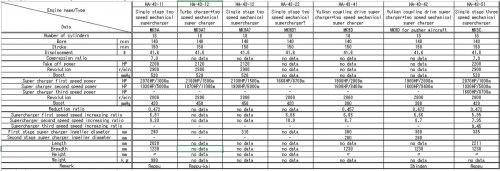 Mitsubishi MK9 engine data.jpg155.8 KB · Views: 262
Mitsubishi MK9 engine data.jpg155.8 KB · Views: 262 -
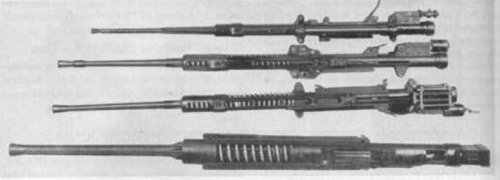 the third picture shows 99 shiki 2 go type 5.jpg38.2 KB · Views: 239
the third picture shows 99 shiki 2 go type 5.jpg38.2 KB · Views: 239 -
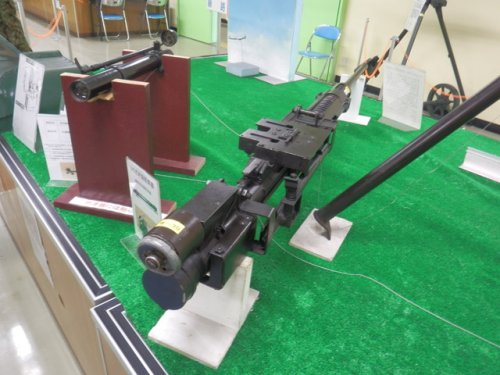 %2099-2%20модель%204.jpg130.9 KB · Views: 201
%2099-2%20модель%204.jpg130.9 KB · Views: 201 -
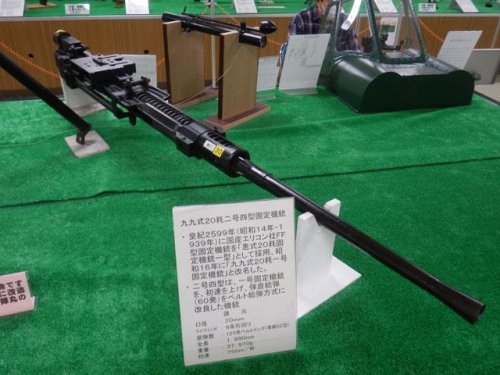 %2099-2%20мод%204.jpg55.3 KB · Views: 185
%2099-2%20мод%204.jpg55.3 KB · Views: 185 -
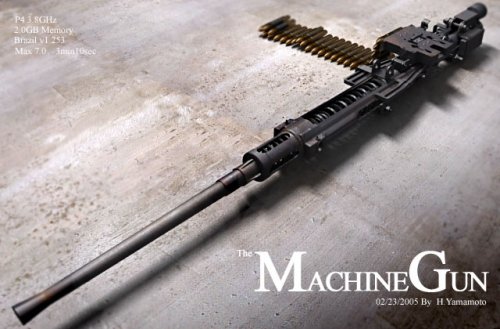 99-shiki 2-go type4.jpg68.7 KB · Views: 208
99-shiki 2-go type4.jpg68.7 KB · Views: 208 -
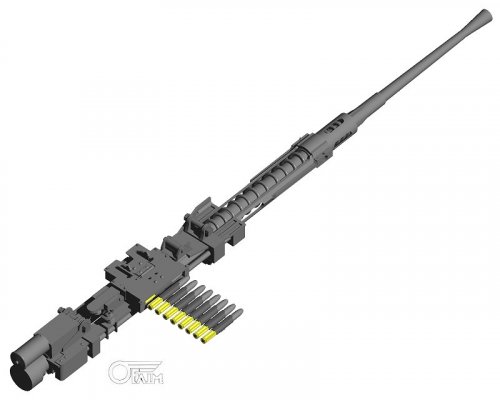 99-shiki 2-go type 4 20mm cannon.jpg35.8 KB · Views: 406
99-shiki 2-go type 4 20mm cannon.jpg35.8 KB · Views: 406
blackkite
Don't laugh, don't cry, don't even curse, but.....
- Joined
- 31 May 2007
- Messages
- 8,783
- Reaction score
- 7,565
blackkite
Don't laugh, don't cry, don't even curse, but.....
- Joined
- 31 May 2007
- Messages
- 8,783
- Reaction score
- 7,565
A7M2 Reppu RC model flight video.
https://www.youtube.com/watch?v=TLHGsRqI7mI
https://www.youtube.com/watch?v=AU4M1p1Ckbs
This is a official A7M2 Reppu general arrangement drawing from temporaly instruction manual.
Source : ISBN978-4-7698-1490-0, Super Zero fighter Reppu, Kojinsha Maru, 2/2/2011
This is a official drawing of A7M1 1/10 wind tunnel test model. (unit : cm)
http://www.secretprojects.co.uk/forum/index.php?action=dlattach;topic=7230.0;attach=514215;image
Please confirm nose shape difference between A7M1 with engine front forced cooling fan and A7M2 without forced cooling fan.
https://www.youtube.com/watch?v=TLHGsRqI7mI
https://www.youtube.com/watch?v=AU4M1p1Ckbs
This is a official A7M2 Reppu general arrangement drawing from temporaly instruction manual.
Source : ISBN978-4-7698-1490-0, Super Zero fighter Reppu, Kojinsha Maru, 2/2/2011
This is a official drawing of A7M1 1/10 wind tunnel test model. (unit : cm)
http://www.secretprojects.co.uk/forum/index.php?action=dlattach;topic=7230.0;attach=514215;image
Please confirm nose shape difference between A7M1 with engine front forced cooling fan and A7M2 without forced cooling fan.
Attachments
blackkite
Don't laugh, don't cry, don't even curse, but.....
- Joined
- 31 May 2007
- Messages
- 8,783
- Reaction score
- 7,565
Hi! A7M3 nose drawing in 24/6/1945 and A7M3-J nose drawing in 16/11/1944.
Source : Gakken, Reppu and Reppu-kai(烈風と烈風改), 1/2/2003. ISBN4-05-602990-3
You can see aircraft name A7M3 and A7M3-J at right bottom of the drawing.
A7M3-J.
http://www.secretprojects.co.uk/forum/index.php?action=dlattach;topic=7230.0;attach=76199;image
You can see forced cooling fan, ram air intake behind forced cooling fan and oil cooler air intake behind forced cooling fan.
Source : Gakken, Reppu and Reppu-kai(烈風と烈風改), 1/2/2003. ISBN4-05-602990-3
You can see aircraft name A7M3 and A7M3-J at right bottom of the drawing.
A7M3-J.
http://www.secretprojects.co.uk/forum/index.php?action=dlattach;topic=7230.0;attach=76199;image
You can see forced cooling fan, ram air intake behind forced cooling fan and oil cooler air intake behind forced cooling fan.
Attachments
blackkite
Don't laugh, don't cry, don't even curse, but.....
- Joined
- 31 May 2007
- Messages
- 8,783
- Reaction score
- 7,565
- Joined
- 11 June 2014
- Messages
- 1,531
- Reaction score
- 2,838
blackkite
Don't laugh, don't cry, don't even curse, but.....
- Joined
- 31 May 2007
- Messages
- 8,783
- Reaction score
- 7,565
Hi! Reppu-kai A7M3-J high altitude interceptor. The engine was a Mitsubishi MK9A(Ha43-11) (with turbocharger, intercooler and forced cooling fan).
You can see intercooler air intake at front end of the engine nacelle both side in the first drawing.
Also you can see intercooler air outlet slit near wing root leading edge.
中間冷却器空気取り入れ口 : Intercooler air intake
The second (Mitsubishi original)drawing drawn date was 7/7/1945.
⑤⑥中間冷却器導風筒線図(左側/右側) : intercooler air duct lines (left side/right side)
Source : ISBN978-4-05-606328-8 局地戦闘機(Interceptor), Gakken

 rarebooksjapan.com
rarebooksjapan.com
You can see intercooler air intake at front end of the engine nacelle both side in the first drawing.
Also you can see intercooler air outlet slit near wing root leading edge.
中間冷却器空気取り入れ口 : Intercooler air intake
The second (Mitsubishi original)drawing drawn date was 7/7/1945.
⑤⑥中間冷却器導風筒線図(左側/右側) : intercooler air duct lines (left side/right side)
Source : ISBN978-4-05-606328-8 局地戦闘機(Interceptor), Gakken

IJN INTERCEPTORS OF W.W.II., PICTORIAL BOOK, GAKKEN REKISHI GUNZO #9 | RareBooksJapan.com
TITLE IJN INTERCEPTORS OF W.W.II., PICTORIAL BOOK, GAKKEN REKISHI GUNZO #9 DESCRIPTION JAPANESE PICTORIAL BOOK, GAKKEN REKISHI GUNZO SERIES FOCUSED ON IMPERIAL JAPANESE NAVY INTERCEPTORS IN W.W.II. HARD TO FIND WARTIME PHOTOS AND DETAILED ILLUSTRATIONS. ISBN978-4-05-606328-8 LANGUAGE JAPANESE...
 rarebooksjapan.com
rarebooksjapan.com
Attachments
Last edited:
- Joined
- 19 July 2016
- Messages
- 4,226
- Reaction score
- 3,400
Thanks very much.
blackkite
Don't laugh, don't cry, don't even curse, but.....
- Joined
- 31 May 2007
- Messages
- 8,783
- Reaction score
- 7,565
Goldkoron
I really should change my personal text
- Joined
- 23 April 2018
- Messages
- 1
- Reaction score
- 0
Reppu & Rikufu
Those are great drawings. I am interested in making a suggestion for the A7M3-J for the game War Thunder, I was wondering what book those drawings are found in.
Thanks!
- Joined
- 31 May 2006
- Messages
- 657
- Reaction score
- 437
If anyone is interested, I have posted Some photoshopped images of A7M fighters in this thread.
Drake's Drum Thread
Drake's Drum Thread
blackkite
Don't laugh, don't cry, don't even curse, but.....
- Joined
- 31 May 2007
- Messages
- 8,783
- Reaction score
- 7,565
blackkite
Don't laugh, don't cry, don't even curse, but.....
- Joined
- 31 May 2007
- Messages
- 8,783
- Reaction score
- 7,565
The Japanese Imperial Navy examined "high altitude air superiority fighter (Ko-fighter)" as a plan policy for new fighter, and the result of the examination was announced to each manufacturer at the Joint meeting of the Navy and private companies held at the 1st Technology Arsenal on May 1, 1945.
At this conference, four proposals were proposed for this fighter which were
1.Reppu modification type
2.Shiden-kai modification type
3. Re-examination of Jinpu
4. Newly designed aircraft.
Jinpu re-examination plan was abolished during the meeting, and it was concluded to develop following fighters.
1. Maximum speed is 704 km / h (at an altitude of 10,000 m), landing speed is 148 km / h or less.
2. Up to 10,000 m within 15 minutes. The climb limit is 13,500 m.
3. The cruising time is 2.5 hours cruising + 0.7 hours full power.
4. Four 20mm cannon (250 bullets).
5. The fuselage tank is rubber bulletproof. Equipped with automatic fire extinguishing system on wings. Protects the rear of the pilot, the top of the magazine and the rear
In response to this request, Mitsubishi Heavy Industries, Kawanishi Aircraft Co., Ltd., and the first Army Arsenal (Nakajima Aircraft was renamed as the first Army Arsenal) submitted performance estimation values for the next generation fighter at the Joint meeting of the Navy and private companies on May 23 of the same year
As the next fighter, Mitsubishi presented three types of plans,
The first Army Arsenal (Nakajima) presented a proposal that was supposedly based on the Ki-87 developed for the Army or the Ki-94II of the Tachikawa.
Among these proposals, the improved plan of Reppu-kai was selected as the "next generation fighter", and it was decided that joint development will be carried out by Mitsubishi and Nakajima, the manufacturer of the "Ha44-21" engine, which will be installed. . This is the aircraft that is called the "20-shi air superiority fighter (20-shi Ko-fighter)".
After that, the planning requirements and performance were decided by the planning requirements council on June 10, the same year, and there was a requirement including possibility to equip the highly feasible "HA44-13" engine. The Navy expected that the 20-shi air superiority fighter would become a force in 1947, but the development was stopped at the planning stage with the end of the war.
There were several other types of fighters that were planned to be prototype ordered from the Navy in 1945, but all of them have ended without realizing the plan, and the 20-shi air superiority fighter was an actually planned fighter by the Japanese Navy.
The plan finally selected was based on the Reppu-kai (or Reppu type-11), and had reached values close to the target values except for the installed amount. The difference from Reppu-kai was that the engine was changed to Ha44-21 and the propeller was changed to a heavier one. The cruising range, armament, bulletproof, etc. were the same as those of the enhanced performance type Reppu. In addition, the automatic air combat flap was scheduled to be improved to ensure air combat performance at high altitudes.
Specifications (planned value)
• Overall width: 14.0 m
• Wing area: 31.3 m2i
• Empty weight: 3,392 kg
• Gross weight: 5,753 kg
• Engine: Nakajima Ha 44-21 Air-cooled radial 18 cylinder (2,200 horsepower) x 1
• Maximum speed: 657 km / h
• Cruising speed: 417 km / h
• Ceiling: 10,500 m
• Cruising time: 2.5 hours cruise + 0.6 hours full speed
• Armament:
Type 99 20mm mark2 cannon Type 5 × 4
• Crew: 1 person
The name "20-shi air superiority fighter " was written in Jiro Horikoshi and Masatake Okuyama’s book "Zero fighter", and is a public-private joint meeting on May 23. It is said that the name was decided in, but the official document at that time did not have the name "20-shi air superiority fighter", and it was called the "Next Fighter" even after the plan began. Therefore, there is a theory that "20-shi air superiority fighter" was a tentative name used only in part. It was also said that the nickname "Rikufu " was planned.
From Japanese sources.
So I think that Justo-san's drawing is excellent!!
At this conference, four proposals were proposed for this fighter which were
1.Reppu modification type
2.Shiden-kai modification type
3. Re-examination of Jinpu
4. Newly designed aircraft.
Jinpu re-examination plan was abolished during the meeting, and it was concluded to develop following fighters.
- "Decisive battle fighter", which were the engine replacement type of Reppu and Shiden-kai.
- Newly planned “Next generation fighter” which followed on “Decisive battle fighter”.
- Mitsubishi "Ha 43-51"
- Nakajima "Ha 44-21"
- Nakajima "Ha 45-44"
1. Maximum speed is 704 km / h (at an altitude of 10,000 m), landing speed is 148 km / h or less.
2. Up to 10,000 m within 15 minutes. The climb limit is 13,500 m.
3. The cruising time is 2.5 hours cruising + 0.7 hours full power.
4. Four 20mm cannon (250 bullets).
5. The fuselage tank is rubber bulletproof. Equipped with automatic fire extinguishing system on wings. Protects the rear of the pilot, the top of the magazine and the rear
In response to this request, Mitsubishi Heavy Industries, Kawanishi Aircraft Co., Ltd., and the first Army Arsenal (Nakajima Aircraft was renamed as the first Army Arsenal) submitted performance estimation values for the next generation fighter at the Joint meeting of the Navy and private companies on May 23 of the same year
As the next fighter, Mitsubishi presented three types of plans,
- Reppu performance improvement model that was being developed
- Modified Reppu-kai
- New design
The first Army Arsenal (Nakajima) presented a proposal that was supposedly based on the Ki-87 developed for the Army or the Ki-94II of the Tachikawa.
Among these proposals, the improved plan of Reppu-kai was selected as the "next generation fighter", and it was decided that joint development will be carried out by Mitsubishi and Nakajima, the manufacturer of the "Ha44-21" engine, which will be installed. . This is the aircraft that is called the "20-shi air superiority fighter (20-shi Ko-fighter)".
After that, the planning requirements and performance were decided by the planning requirements council on June 10, the same year, and there was a requirement including possibility to equip the highly feasible "HA44-13" engine. The Navy expected that the 20-shi air superiority fighter would become a force in 1947, but the development was stopped at the planning stage with the end of the war.
There were several other types of fighters that were planned to be prototype ordered from the Navy in 1945, but all of them have ended without realizing the plan, and the 20-shi air superiority fighter was an actually planned fighter by the Japanese Navy.
The plan finally selected was based on the Reppu-kai (or Reppu type-11), and had reached values close to the target values except for the installed amount. The difference from Reppu-kai was that the engine was changed to Ha44-21 and the propeller was changed to a heavier one. The cruising range, armament, bulletproof, etc. were the same as those of the enhanced performance type Reppu. In addition, the automatic air combat flap was scheduled to be improved to ensure air combat performance at high altitudes.
Specifications (planned value)
• Overall width: 14.0 m
• Wing area: 31.3 m2i
• Empty weight: 3,392 kg
• Gross weight: 5,753 kg
• Engine: Nakajima Ha 44-21 Air-cooled radial 18 cylinder (2,200 horsepower) x 1
• Maximum speed: 657 km / h
• Cruising speed: 417 km / h
• Ceiling: 10,500 m
• Cruising time: 2.5 hours cruise + 0.6 hours full speed
• Armament:
Type 99 20mm mark2 cannon Type 5 × 4
• Crew: 1 person
The name "20-shi air superiority fighter " was written in Jiro Horikoshi and Masatake Okuyama’s book "Zero fighter", and is a public-private joint meeting on May 23. It is said that the name was decided in, but the official document at that time did not have the name "20-shi air superiority fighter", and it was called the "Next Fighter" even after the plan began. Therefore, there is a theory that "20-shi air superiority fighter" was a tentative name used only in part. It was also said that the nickname "Rikufu " was planned.
From Japanese sources.
So I think that Justo-san's drawing is excellent!!
Last edited:
Interesting comment that there were more surviving P47 aces than P38 and P51. I need to see that post where that is sited. When I looked over the Number and kinds of sorties. The Mustang replaced the P47 because of its range. Which allowed them to combat enemy fighters daily and longer over the target areas. P47 flew back up sorties picking up the bombers returning to England. Allowing the Mustangs to fly safely to base. They encountered some German fighters and shot the few down that followed the bombers. Which limited their ability to shoot down German planes but also they did not face the level of danger. There may have been more P47 aces but they began combat 6 months before the Mustangs and took another 6 months to get enough Mustangs to replace the P47s and P38. Most P47 pilots transitioned to Mustangs. Which means there may have been more Mustang aces than P47.
When the P38L model came on the scene it was a much better fighter and its scores improved. They always had the range but now have improved flight performance with reliable engines. The key difference is that the a Mustang went into Germany and ran into a hornets nest of German fighters. The P47 pilots had to wait until the Germans came to them. When they flew from French bases were relegated to medium and low altitude combat. P47s sweet spot was top cover. Reading the statistics...the P51 shot down and destroyed way more Germans and flew way less sorties than the P47. Plus fewer Mustangs shoot-downs by German fighters than P47. This comment came from comments from Planes of Fame pilots.
What is more profound were the planes after WW2 the a Mustang was bought by many nations. Only Brazil and Taiwan seem to take the P47. But the Me109, G55, Fury, Late model Spitfires, Yak 9, P63, F8F, F7F, Corsair were all more popular. Some manufactured to the mid 50’s which includes the Corsair and Cavalier Mustang. P47 was a competent fighter with excellent flight controls..after figuring out high altitude was a key advantage. Range was key to get into the fight. Because that how you get in ... close and personal.
One other comment I think was false is that the P47 would have been a better platform than the Mustang in Korea. No it wouldn’t. First you could not take a loaded P47 off from the Japanese built airbases in Korea. Maybe in Japan but then again would need an hour or so to reach the target. May get in one sortie a day. Second it had a huge oil tank and cooler. Hit those or the oil lines to the turbocharger it would flame up like the Corsair. Which had a near identical loss/sortie rate to the Mustang.
Another thought came to mind about the Mustang...it was a clean slate design. Not an upgrade or derivative of a prior version. Everything was new. How it was manufactured, how the assemblers were trained and organized, construction tolerances, ease of maintenance was designed in, use of new technology available at the time. Aside from the FW190 and some Japanese designs. It was a generation ahead.
When the P38L model came on the scene it was a much better fighter and its scores improved. They always had the range but now have improved flight performance with reliable engines. The key difference is that the a Mustang went into Germany and ran into a hornets nest of German fighters. The P47 pilots had to wait until the Germans came to them. When they flew from French bases were relegated to medium and low altitude combat. P47s sweet spot was top cover. Reading the statistics...the P51 shot down and destroyed way more Germans and flew way less sorties than the P47. Plus fewer Mustangs shoot-downs by German fighters than P47. This comment came from comments from Planes of Fame pilots.
What is more profound were the planes after WW2 the a Mustang was bought by many nations. Only Brazil and Taiwan seem to take the P47. But the Me109, G55, Fury, Late model Spitfires, Yak 9, P63, F8F, F7F, Corsair were all more popular. Some manufactured to the mid 50’s which includes the Corsair and Cavalier Mustang. P47 was a competent fighter with excellent flight controls..after figuring out high altitude was a key advantage. Range was key to get into the fight. Because that how you get in ... close and personal.
One other comment I think was false is that the P47 would have been a better platform than the Mustang in Korea. No it wouldn’t. First you could not take a loaded P47 off from the Japanese built airbases in Korea. Maybe in Japan but then again would need an hour or so to reach the target. May get in one sortie a day. Second it had a huge oil tank and cooler. Hit those or the oil lines to the turbocharger it would flame up like the Corsair. Which had a near identical loss/sortie rate to the Mustang.
Another thought came to mind about the Mustang...it was a clean slate design. Not an upgrade or derivative of a prior version. Everything was new. How it was manufactured, how the assemblers were trained and organized, construction tolerances, ease of maintenance was designed in, use of new technology available at the time. Aside from the FW190 and some Japanese designs. It was a generation ahead.
Last edited:
windswords
ACCESS: Secret
- Joined
- 19 May 2009
- Messages
- 389
- Reaction score
- 211
By early to middle of 1944, P-47s were going to Berlin and 80% of other targets in Germany. The combat radius of the P-47D "bubbletop" was almost 600 miles, more than enough to take them to Berlin. As the Mustang came online the Thunderbolts were transferred to the 9th and 12th Air Forces for ground attack. In that role they excelled as they did in air to air and for close air support they didn't need a fighter escort.
Even so the last P-47 group to convert to P-51s in the 8th Air Force did not do so until December 1944. The Mustang did not become the most numerous fighter in the 8th Air Force until the middle of 1944. When the USAAF declared it had achieved air superiority over Europe in March 1944, the P-47 accounted for more air to air kills in that month than the P-51 and P-38 combined. It would be accurate to say that the P-47 mortally wounded the Luftwaffe fighter corps and the P-51 delivered the "coup de grâce" while the P-47 went on to destroy the German army on the ground. Unfortunately the press was in love with the sexy Mustang and it got all the attention, to the point that today the layman thinks that only the P-51 took on the German Air Force. The top aces in the ETO flew Thunderbolts either exclusively or for a large number of their confirmed victories.
The highest loss rate per sortie in the USAAF was the P-38 at 1.35%. The P-51 was at 1.18%, just under the P-38. The P-39 Airacobra, contrary to what you might believe, had a loss rate per sortie of only 0.35%! The P-47 Thunderbolt was the most complex fighter in the USAAF and it flew more than twice as many sorties as any other fighter, a lot of those being ground attack, which is inherently a more dangerous mission than bomber escort or fighter sweep. It's loss rate per sorties was 0.73%, making flying one almost twice as safe as flying a P-51.
The number of kills by Mustang pilots was due to two factors: longer range allowed them to not only escort the bombers, but after that leg of the mission they were able to roam and look for targets of opportunity, which not only included aircraft in flight but aircraft on the ground (which the US counted towards a fighter groups overall victory tally). Secondly, by the time air superiority was declared in March 1944, most of the veteran German pilots had been shot down and killed or injured. As the 1944 wore on the quality of the German pilots diminished rapidly, and their replacements were easy kills. Previously the P-47 and P-38 pilots (and the Spitfires as well) went up against some of the best that Germany had to offer. Fortunately a good many of Germany's planes and good pilots were busy on the Eastern Front.
The final version of the P-47, the model N, had more range than than the P-51D at 2,350 miles and flew missions in excess of 8 hours. It was built for those long missions. It had a very good auto pilot, fold away rudder pedals and arm rests. Perfect for long over water flights where there was no danger of enemy interception. Pilots who have flown both have stated that the Thunderbolt had a lot more room in the cockpit than the Mustang (but neither was as bad as the Spitfire). The last USAAF "ace in day" was Oscar Perdomo who shot down 5 Japanese planes on Aug 13, 1945. When he finally landed back on his base it had been 8 hours and 20 minutes since he first took off. Not to leave the P-38 out of this but when equipped with tanks the P-38L model had a range approaching almost 3,000 miles, about 1/3 more than the P-51D.
The real reason the P-51 was favored over the other fighters was cost. For the cost of one P-38 you could get two Mustangs. for one P-47, one and half Mustangs. It also fit the image of the fighter pilot obsessed press, sleek and sexy. We see the same tendencies play out today with the Air Force's attitude toward the A-10. The Air Force has never appreciated the aircraft and thinks that the F-16 and F-35 can fullfill it's role instead. This is not a new view of the A-10 due to recent improvements in technology; it has been the view of the Air Force brass for over 20 years.
The following nations have used the P-47 Thunderbolt in WWII and Post-war (dates are given if known):
Bolivia
Brazil
Chile
Republic of China
Colombia - 1947–1957
Cuba
Dominican Republic - 1952–1957
Ecuador - 1947–1959
France - Free French Air Force and French Air Force
Guatemala
Iran - 1948
French Algeria - 1952
Italy - 1950
Mexico
Nicaragua - 1954
Peru - July 1947 – 1963
Portugal - (post-war)
Soviet Union (Lend Lease)
Turkey - 1948-1954
United Kingdom - 16 squadrons in CBI Theater
Venezuela
Yugoslavia - 1952
Even so the last P-47 group to convert to P-51s in the 8th Air Force did not do so until December 1944. The Mustang did not become the most numerous fighter in the 8th Air Force until the middle of 1944. When the USAAF declared it had achieved air superiority over Europe in March 1944, the P-47 accounted for more air to air kills in that month than the P-51 and P-38 combined. It would be accurate to say that the P-47 mortally wounded the Luftwaffe fighter corps and the P-51 delivered the "coup de grâce" while the P-47 went on to destroy the German army on the ground. Unfortunately the press was in love with the sexy Mustang and it got all the attention, to the point that today the layman thinks that only the P-51 took on the German Air Force. The top aces in the ETO flew Thunderbolts either exclusively or for a large number of their confirmed victories.
The highest loss rate per sortie in the USAAF was the P-38 at 1.35%. The P-51 was at 1.18%, just under the P-38. The P-39 Airacobra, contrary to what you might believe, had a loss rate per sortie of only 0.35%! The P-47 Thunderbolt was the most complex fighter in the USAAF and it flew more than twice as many sorties as any other fighter, a lot of those being ground attack, which is inherently a more dangerous mission than bomber escort or fighter sweep. It's loss rate per sorties was 0.73%, making flying one almost twice as safe as flying a P-51.
The number of kills by Mustang pilots was due to two factors: longer range allowed them to not only escort the bombers, but after that leg of the mission they were able to roam and look for targets of opportunity, which not only included aircraft in flight but aircraft on the ground (which the US counted towards a fighter groups overall victory tally). Secondly, by the time air superiority was declared in March 1944, most of the veteran German pilots had been shot down and killed or injured. As the 1944 wore on the quality of the German pilots diminished rapidly, and their replacements were easy kills. Previously the P-47 and P-38 pilots (and the Spitfires as well) went up against some of the best that Germany had to offer. Fortunately a good many of Germany's planes and good pilots were busy on the Eastern Front.
The final version of the P-47, the model N, had more range than than the P-51D at 2,350 miles and flew missions in excess of 8 hours. It was built for those long missions. It had a very good auto pilot, fold away rudder pedals and arm rests. Perfect for long over water flights where there was no danger of enemy interception. Pilots who have flown both have stated that the Thunderbolt had a lot more room in the cockpit than the Mustang (but neither was as bad as the Spitfire). The last USAAF "ace in day" was Oscar Perdomo who shot down 5 Japanese planes on Aug 13, 1945. When he finally landed back on his base it had been 8 hours and 20 minutes since he first took off. Not to leave the P-38 out of this but when equipped with tanks the P-38L model had a range approaching almost 3,000 miles, about 1/3 more than the P-51D.
The real reason the P-51 was favored over the other fighters was cost. For the cost of one P-38 you could get two Mustangs. for one P-47, one and half Mustangs. It also fit the image of the fighter pilot obsessed press, sleek and sexy. We see the same tendencies play out today with the Air Force's attitude toward the A-10. The Air Force has never appreciated the aircraft and thinks that the F-16 and F-35 can fullfill it's role instead. This is not a new view of the A-10 due to recent improvements in technology; it has been the view of the Air Force brass for over 20 years.
The following nations have used the P-47 Thunderbolt in WWII and Post-war (dates are given if known):
Bolivia
Brazil
Chile
Republic of China
Colombia - 1947–1957
Cuba
Dominican Republic - 1952–1957
Ecuador - 1947–1959
France - Free French Air Force and French Air Force
Guatemala
Iran - 1948
French Algeria - 1952
Italy - 1950
Mexico
Nicaragua - 1954
Peru - July 1947 – 1963
Portugal - (post-war)
Soviet Union (Lend Lease)
Turkey - 1948-1954
United Kingdom - 16 squadrons in CBI Theater
Venezuela
Yugoslavia - 1952
Last edited:
- Joined
- 11 March 2012
- Messages
- 3,245
- Reaction score
- 3,152
A structural engineering question ....
Posts # 93 and 94 show a steel(?) tube engine mount extending from (wings') main spar all the way forward to the engine. Post #94 even shows a two-piece tubular engine mount. The aft portion seems to be primarily a mount for an inter-cooler/radiator.
This made sense during the early war years when Me-109 and Spitfire were wrapping the smallest possible airframe around the largest possible engine: Spitfire, Me-109, Grumman F4 Wildcat, P-51 Mustang, Hawker Typhoon, Vought F4U Corsair, etc.
Sea Fury was the first Hawker fighter to dispense with the tubular centre fuselage. IOW Sea Fury was the first Hawker fighter with a sheet aluminum fuselage all the way forward to the firewall.
Was it that difficult to build a sheet aluminum forward fuselage capable of absorbing engine loads?
Sheet metal - all the way to the firewall - seems to have worked well for Grumman, Republic, Focke-Wulf, Yakovlev, etc.
In comparison, Most Japanese single-engined airplanes had sheet metal fuselages all the way forward to the firewall.
Mitsubishi A7M3 seems to be one of the few Japanese fighters to revert to the older style of engine mount.
Posts # 93 and 94 show a steel(?) tube engine mount extending from (wings') main spar all the way forward to the engine. Post #94 even shows a two-piece tubular engine mount. The aft portion seems to be primarily a mount for an inter-cooler/radiator.
This made sense during the early war years when Me-109 and Spitfire were wrapping the smallest possible airframe around the largest possible engine: Spitfire, Me-109, Grumman F4 Wildcat, P-51 Mustang, Hawker Typhoon, Vought F4U Corsair, etc.
Sea Fury was the first Hawker fighter to dispense with the tubular centre fuselage. IOW Sea Fury was the first Hawker fighter with a sheet aluminum fuselage all the way forward to the firewall.
Was it that difficult to build a sheet aluminum forward fuselage capable of absorbing engine loads?
Sheet metal - all the way to the firewall - seems to have worked well for Grumman, Republic, Focke-Wulf, Yakovlev, etc.
In comparison, Most Japanese single-engined airplanes had sheet metal fuselages all the way forward to the firewall.
Mitsubishi A7M3 seems to be one of the few Japanese fighters to revert to the older style of engine mount.
Interesting the loss rate that the Mustang was slightly higher...because pilots were exposed to danger 2 hours longer per sortie than the P47. Mustangs once deployed right away began to out score P47 pilots. This is key, P47s could not escort the Bombers to the targets in Germany. German fighters could not pick their battle as the fight came to them. The performance of the Mustang allowed low time combat pilots to rack up scores even against experienced German pilots. Mustang was a far more effective, efficient, cost affective plane of just about every attribute over a P47. Was it a good plane..yeah...but was not be the equal of the Mustang.
windswords
ACCESS: Secret
- Joined
- 19 May 2009
- Messages
- 389
- Reaction score
- 211
Twice as high is not slightly higher. Most of the two hours more per sortie were flying along side bombers with nothing to do. With 746,000 sorties of all types by the P-47 the total hours in the air is also higher. By the end of the war, the 56th FG claimed 677.5 air victories and 311 ground kills, at the cost of 128 aircraft, the top-scoring group in aerial victories throughout the war. By early to middle of 1944, P-47s were going to Berlin and 80% of other targets in Germany. The combat radius of the P-47D "bubbletop" was almost 600 miles, more than enough to take them to Berlin.
The number of kills by Mustang pilots was due to two factors: longer range allowed them to not only escort the bombers, but after that leg of the mission they were able to roam and look for targets of opportunity, which not only included aircraft in flight but aircraft on the ground (which the US counted towards a fighter groups overall victory tally). Secondly, by the time air superiority was declared in March 1944, most of the veteran German pilots had been shot down and killed or injured. Early 1944 was the tipping point in the Air War over Western Europe. The targeting of the Luftwaffe by the 8th Air Force ("Big Week") pushed them over the edge. Later the campaign against the fuel supplies stripped them of fuel to train and fight with. As the 1944 wore on the quality of the German pilots diminished rapidly, and their replacements were easy kills. This coincided with the increased availability of the Mustang. Previously the P-47 and P-38 pilots (and the Spitfires as well) went up against some of the best that Germany had to offer. Fortunately a good many of Germany's planes and good pilots were busy on the Eastern Front as well. Even so P-47s continued to rack up air to air kills even as they were switched over to ground attack. Even the German jets were shot down by 8th and 9th Air Force Jugs. Cost was a factor as the cost of 1 P-38 was equal to two P-51s and one P-47 was equal to one and a half P-51s.
The number of kills by Mustang pilots was due to two factors: longer range allowed them to not only escort the bombers, but after that leg of the mission they were able to roam and look for targets of opportunity, which not only included aircraft in flight but aircraft on the ground (which the US counted towards a fighter groups overall victory tally). Secondly, by the time air superiority was declared in March 1944, most of the veteran German pilots had been shot down and killed or injured. Early 1944 was the tipping point in the Air War over Western Europe. The targeting of the Luftwaffe by the 8th Air Force ("Big Week") pushed them over the edge. Later the campaign against the fuel supplies stripped them of fuel to train and fight with. As the 1944 wore on the quality of the German pilots diminished rapidly, and their replacements were easy kills. This coincided with the increased availability of the Mustang. Previously the P-47 and P-38 pilots (and the Spitfires as well) went up against some of the best that Germany had to offer. Fortunately a good many of Germany's planes and good pilots were busy on the Eastern Front as well. Even so P-47s continued to rack up air to air kills even as they were switched over to ground attack. Even the German jets were shot down by 8th and 9th Air Force Jugs. Cost was a factor as the cost of 1 P-38 was equal to two P-51s and one P-47 was equal to one and a half P-51s.
Last edited:
So did we have new replacement pilots...German pilots had as much as 8 -10 years combat experience. Which no doubt whittled down. But their biggest losses were their inexperienced pilots. In fact Most of our pilots were newbys too. Plus there were more than German pilots. You had Italian, Rumanian, Hungarian, Serbians, some Polish, and pilots trained in a few other countries that made up the Luftwaffe. It was interesting the number of experienced pilots the Germans still had at the end of the war.Twice as high is not slightly higher. Most of the two hours more per sortie were flying along side bombers with nothing to do. With 746,000 sorties of all types by the P-47 the total hours in the air is also higher. By the end of the war, the 56th FG claimed 677.5 air victories and 311 ground kills, at the cost of 128 aircraft, the top-scoring group in aerial victories throughout the war. By early to middle of 1944, P-47s were going to Berlin and 80% of other targets in Germany. The combat radius of the P-47D "bubbletop" was almost 600 miles, more than enough to take them to Berlin.
The number of kills by Mustang pilots was due to two factors: longer range allowed them to not only escort the bombers, but after that leg of the mission they were able to roam and look for targets of opportunity, which not only included aircraft in flight but aircraft on the ground (which the US counted towards a fighter groups overall victory tally). Secondly, by the time air superiority was declared in March 1944, most of the veteran German pilots had been shot down and killed or injured. Early 1944 was the tipping point in the Air War over Western Europe. The targeting of the Luftwaffe by the 8th Air Force ("Big Week") pushed them over the edge. Later the campaign against the fuel supplies stripped them of fuel to train and fight with. As the 1944 wore on the quality of the German pilots diminished rapidly, and their replacements were easy kills. This coincided with the increased availability of the Mustang. Previously the P-47 and P-38 pilots (and the Spitfires as well) went up against some of the best that Germany had to offer. Fortunately a good many of Germany's planes and good pilots were busy on the Eastern Front as well. Even so P-47s continued to rack up air to air kills even as they were switched over to ground attack. Even the German jets were shot down by 8th and 9th Air Force Jugs. Cost was a factor as the cost of 1 P-38 was equal to two P-51s and one P-47 was equal to one and a half P-51s.
One of the things not considered are the economics and logistics of WW2..the use of just going with the Mustang would have cut costs and resources to fight and dramatically. Would have an improvement in operational successes, easier to train mechanics on one plane, more resources put forth to improve performance of the Mustang. In fact that would have included the Allison P51A Mustang which was highly desired by the British. Later models with a better single stage supercharger with 150 octane were used to chase down V1’s. The versatility of an airframe able to use two power plants for different operational uses is over looked.
Would like to compare operational cost per sortie...today it is insane flying a $30000/hour operational cost Fighter firing a $1million missile at a worn out ISIL Toyota truck..
Traduction repu en Anglais | Dictionnaire Français-Anglais | Reverso
traduction repu dans le dictionnaire Français - Anglais de Reverso, voir aussi 'réputé, répudier, répugner, répugnant', conjugaison, expressions idiomatiques
"The sated aircraft"
windswords
ACCESS: Secret
- Joined
- 19 May 2009
- Messages
- 389
- Reaction score
- 211
The German pilots alive at the end of the war were the lucky ones to have survived. Especially after air supremacy was achieved. That can be attributed to lack of fuel as well as lack of experienced pilots. One hundred fifty octane fuel led to outputs of 2,800 hp (some say more was attained) and 470-480 mph in the P-47Ms once the other bugs were worked out. Not one was lost in air to air combat although some were lost to flak - most of the targets were now only on the ground. Even before that a late model P-47D was pushed to 445 mph in a test - with no damage to the engine. Maybe it was not used operationally because it was already fast enough.
I agree that focusing on one plane would have saved money and time (same thing). One could argue the P-47 should have been that plane. You could ship all the P-38s to the Pacific or keep a few fighter groups for deep escort mission until the P-47N was developed. Republic also developed a hot-rod experimental version with only 6 guns (all it really needed for air-to-air). Besides the weight loss of two guns, it was lightened further and streamlined. Not only was the speed increased but the range and rate of climb as well. I don't know if this version had the Paddle blade prop or not. I would think it did in order to get the increase output out of the engine. Only 6 guns would have improved roll rate I would think. At any rate focusing on the P-47 would mean a sooner development of the N model - once Republic committed to doing it it didn't take very long to engineer it.
A strategy could have been to focus on the P-47 and build two main versions: one for close air support and one for high-altitude escort. If the P-51 was developed at all it could have sent to the Pacific where it could have ranges as far as the Japanese Zero. Imagine navalized Mustangs able to fly distances Hellcats and Corsairs could only dream about.
I agree that focusing on one plane would have saved money and time (same thing). One could argue the P-47 should have been that plane. You could ship all the P-38s to the Pacific or keep a few fighter groups for deep escort mission until the P-47N was developed. Republic also developed a hot-rod experimental version with only 6 guns (all it really needed for air-to-air). Besides the weight loss of two guns, it was lightened further and streamlined. Not only was the speed increased but the range and rate of climb as well. I don't know if this version had the Paddle blade prop or not. I would think it did in order to get the increase output out of the engine. Only 6 guns would have improved roll rate I would think. At any rate focusing on the P-47 would mean a sooner development of the N model - once Republic committed to doing it it didn't take very long to engineer it.
A strategy could have been to focus on the P-47 and build two main versions: one for close air support and one for high-altitude escort. If the P-51 was developed at all it could have sent to the Pacific where it could have ranges as far as the Japanese Zero. Imagine navalized Mustangs able to fly distances Hellcats and Corsairs could only dream about.
windswords
ACCESS: Secret
- Joined
- 19 May 2009
- Messages
- 389
- Reaction score
- 211
There was also Ki-118 https://ja.wikipedia.org/wiki/烈風 - a proposed Army version based on A7M with Ha-43 for a fighter with short range .
Andy Davis
ACCESS: Restricted
- Joined
- 21 March 2023
- Messages
- 1
- Reaction score
- 0
According to a book written by Martin Caiden and Saburo Sakai, Samurai, Saburi, Japans greatest fighter pilot has flown the Reppu as a test pilot and said, " It took my breath away with its tremendous speed, and it's rate of climb was astounding. With a powerful engine, a four blade propeller, and new supercharger the Reppu ran away from everything in the air, Japanese or American. It could fly circles in a climb around either the Hellcat or the Mustang, and the engineers told me it would fight better than 40,000 feet." He is reported saying, " The Reppu was a sensational airplane, the fastest I had ever flown."I assume the A7M Reppu is well-known among the readers of this forum. I've got a question about it and found no dedicated A7M thread, so here's one!
For starters: It was a prototype for a new Japanese carrier-borne fighter; didn't make it into production till the end of WW2. It was designed as a true successor to the A6M.
I'm aware that this fighter (would have) combined adequate protection, good armament, very good range and excellent (turn) agility.
Yet, there's one thing that irritates me.
It's the same as with the Ki-100 and several other Japanese fighters (and even the F6F Hellcat).
The top speed (sources generally agree on about 630 km/h) looks way too slow, and it's usually given for medium altitude (like about 6,000 m). Aircraft are slow at low altitude because of the higher drag (more dense atmosphere), but 630 km/h is ridiculously slow for 1945. New European propeller fighters of 1944/45 ranged at speeds between 700 and 780 km/h, and new versions of old models made between about 650 and 750 km/h.
A rule of thumb says that fighters weren't able compensate for a 80 km/h speed disadvantage. Agility still helped for defensive maneuvers, but such a speed disadvantage was simply unbearable for fighter pilots in WW2. They were prey for hit&run tactics in slow fighters.
630 km/h is like the Fw190's speed in 1942. It's unacceptably slower than a P-51D/H, P-47D/N, late Seafire, Bearcat and late Corsair.
Therefore my question (about A7M top speed and about similar cases, like Ki-100):
Does anybody have hints that could explain or falsify this top speed?
I know that somewhere deep in this forum someone already showed test flight reports (of WW2) that mentioned a higher Hellcat top speed than is usually given in sources. I hope someone could uncover something like this.
For those who expected some eye candy:
or info:
Just finished reading his book, "Samurai" A must read for anyone who likes historical facts from a Japanese Naval pilot.
I assume the A7M Reppu is well-known among the readers of this forum. I've got a question about it and found no dedicated A7M thread, so here's one!
For starters: It was a prototype for a new Japanese carrier-borne fighter; didn't make it into production till the end of WW2. It was designed as a true successor to the A6M.
I'm aware that this fighter (would have) combined adequate protection, good armament, very good range and excellent (turn) agility.
Yet, there's one thing that irritates me.
It's the same as with the Ki-100 and several other Japanese fighters (and even the F6F Hellcat).
The top speed (sources generally agree on about 630 km/h) looks way too slow, and it's usually given for medium altitude (like about 6,000 m). Aircraft are slow at low altitude because of the higher drag (more dense atmosphere), but 630 km/h is ridiculously slow for 1945. New European propeller fighters of 1944/45 ranged at speeds between 700 and 780 km/h, and new versions of old models made between about 650 and 750 km/h.
A rule of thumb says that fighters weren't able compensate for a 80 km/h speed disadvantage. Agility still helped for defensive maneuvers, but such a speed disadvantage was simply unbearable for fighter pilots in WW2. They were prey for hit&run tactics in slow fighters.
630 km/h is like the Fw190's speed in 1942. It's unacceptably slower than a P-51D/H, P-47D/N, late Seafire, Bearcat and late Corsair.
Therefore my question (about A7M top speed and about similar cases, like Ki-100):
Does anybody have hints that could explain or falsify this top speed?
I know that somewhere deep in this forum someone already showed test flight reports (of WW2) that mentioned a higher Hellcat top speed than is usually given in sources. I hope someone could uncover something like this.
For those who expected some eye candy:
or info:
Similar threads
-
French Transatlantic Seaplane Competition of 1934,Phase 1 & 2
- Started by hesham
- Replies: 5
-
Kawasaki Ki-78 « Kenzo » ('Ken-3' intermediate aircraft)
- Started by hesham
- Replies: 35
-
-
-

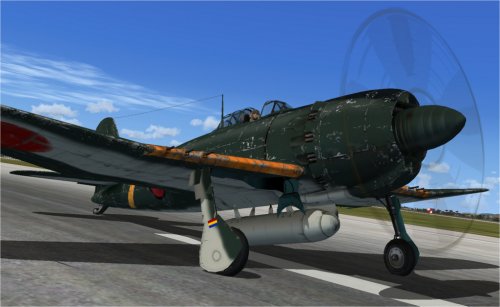
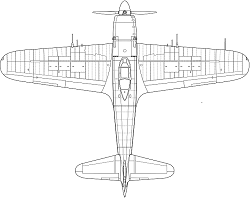
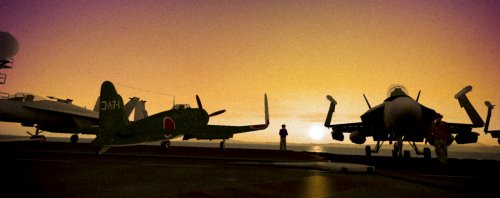
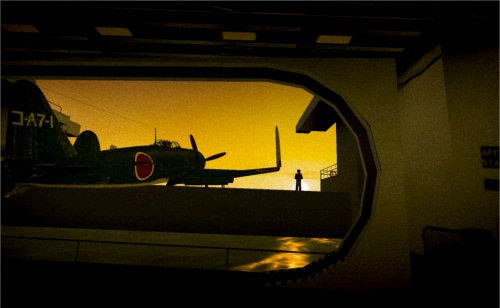
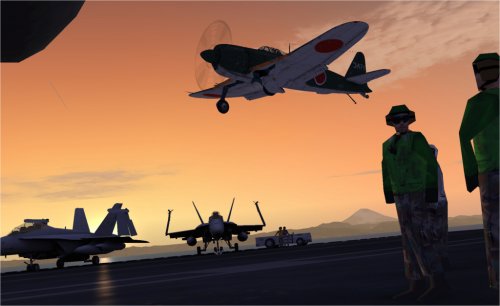
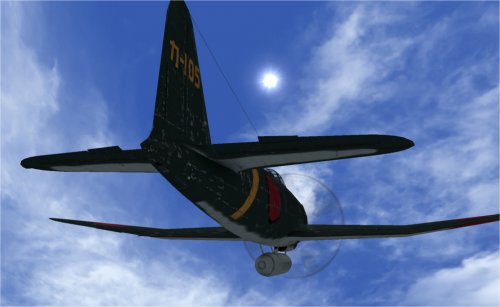
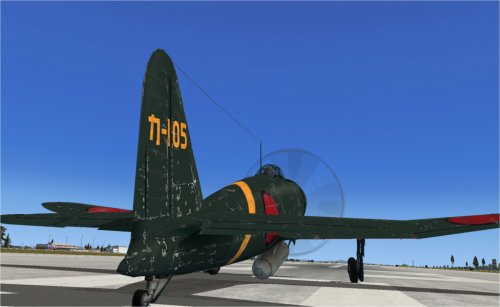

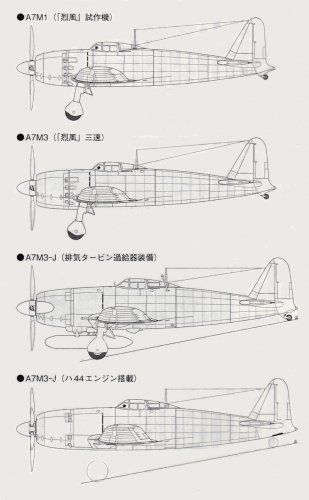
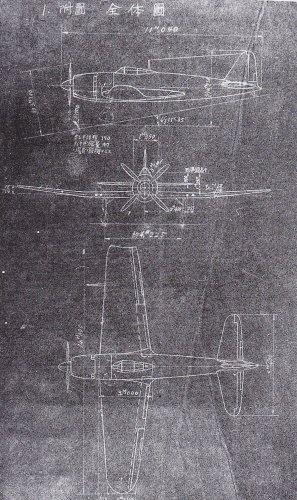
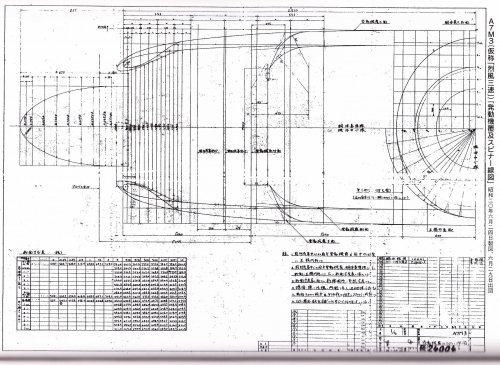
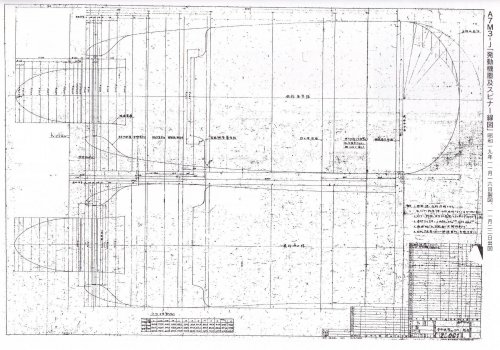
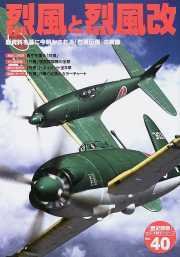
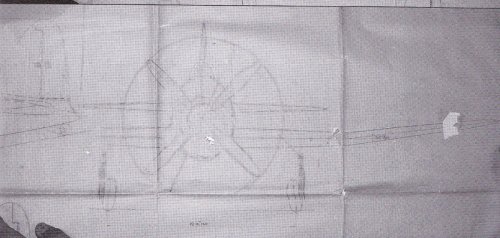
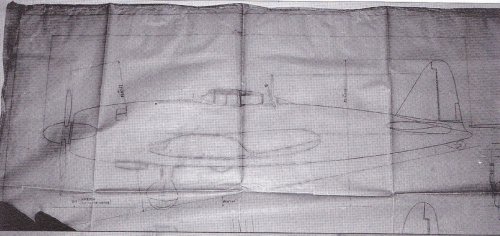
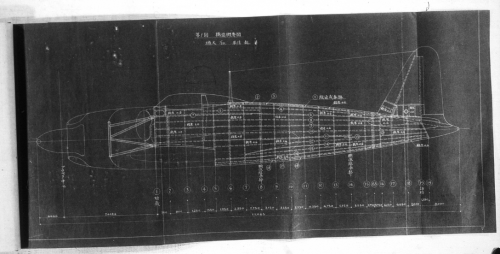
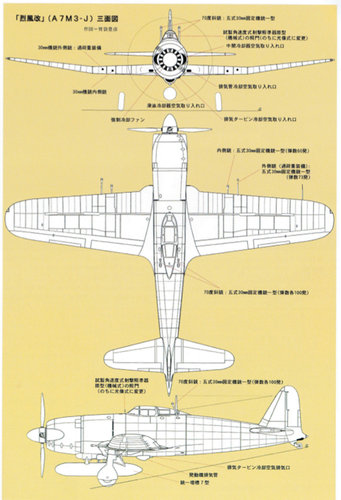
![A7M3-J[1].jpg](/data/attachments/156/156867-90aa073c385b55815fb99c8b2e4ff838.jpg)
